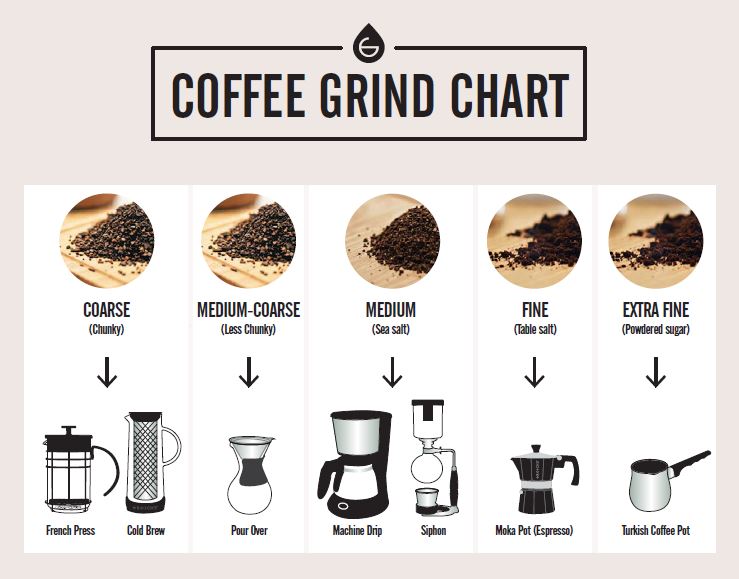g espresso at home, I quickly learned that grind size is just as important as having quality beans or a top-notch machine. The grind directly affects the taste and texture of your espresso, and after many attempts, I’ve gathered some useful insights on how to achieve the perfect grind. Discover the innovative features in the DeLonghi Magnifica Evo review
Espresso is loved for its rich, concentrated flavors, but getting that ideal shot requires precision in many areas: selecting the best beans, using a reliable machine, controlling water temperature, applying the right pressure, and, of course, grinding correctly. Too coarse or too fine a grind, and you could end up with a shot that’s either overly bitter or unpleasantly sour. Learn about the timeless design in the DeLonghi Magnifica S review
So, what is the best grind size to achieve that perfect espresso shot at home? Let me share what I've discovered through my experience. Explore our top picks in the Best Automatic Espresso Machine review
Why Grind Size Matters for Espresso
During the brewing process, hot water moves through the coffee grounds, extracting flavors, aromas, and the body that make espresso unique. The grind size plays a crucial role in ensuring proper extraction. Unlike methods like French press or pour-over, espresso requires a very fine grind. The key is finding the right balance. Find the perfect machine to beat the heat in the Best Iced Coffee Maker review
- Too Coarse: If the grind is too coarse, water flows too quickly through the grounds, leading to under-extraction and a weak, sour flavor.
- Too Fine: If the grind is too fine, water struggles to pass through, which causes over-extraction and results in a bitter, overpowering shot.
Finding the Ideal Grind
Through a lot of trial and error, I found that the perfect grind for espresso resembles fine sand. It shouldn’t be as powdery as flour, nor as coarse as salt. When you rub it between your fingers, it should feel slightly textured, but it should still hold together.
Investing in a burr grinder is essential for consistency. Unlike blade grinders, which create uneven grounds, burr grinders offer a more uniform grind, ensuring consistent extraction and balanced flavors in your espresso. Dive into the best options for making lattes in the Best Latte Maker review

Adjusting the Grind to Fit Your Espresso Machine
Each espresso machine has unique characteristics, so it’s important to adjust the grind according to your specific machine. Here are some general guidelines I follow:
- Brews Too Quickly (<20 Seconds): The grind is likely too coarse.
- Brews Too Slowly (>30 Seconds): The grind is probably too fine.
I aim for a shot that pulls between 25 and 30 seconds. Keep in mind that different coffee beans might require small adjustments to the grind size, so when I change roasts, I tweak the grind settings to match.
Tips for Maintaining Consistent Grind Quality
Consistency is key when it comes to espresso. Here are some important factors to keep in mind for optimal results:
- Fresh Beans: Beans within two weeks of roasting yield the best flavor and crema.
- Tamping Technique: Apply even pressure when tamping the grounds to ensure uniform water flow and avoid channeling, where water passes through certain spots more quickly, causing uneven extraction.
- Measuring Your Dose: Using a scale to measure your coffee dose accurately makes a huge difference. I typically use 18-20 grams for a double shot to achieve consistent results.
Experimenting With Grind Size for New Flavor Profiles
While fine grind is standard for espresso, there’s room for experimentation, particularly if you’re trying to discover new flavors.
- Lighter Roasts: A slightly coarser grind can help balance the acidity and bring out more sweetness.
- Darker Roasts: A finer grind can intensify the rich, roasted, and chocolatey notes.
Common Mistakes to Avoid
Over time, I’ve learned to avoid a few mistakes that can easily ruin a good shot:
- Grinding Too Early: Coffee loses its freshness soon after grinding, so I grind only what I need just before brewing.
- Neglecting Grinder Maintenance: Regular cleaning of your grinder is essential to prevent old grounds and oils from affecting the taste of your espresso.
- Ignoring Roast Dates: Beans are at their best within one to two weeks of roasting. Even if your grind is perfect, stale beans will still yield a flat and dull shot.

Conclusion: Mastering the Art of Home Espresso
Perfecting the grind for home espresso is a rewarding process that requires practice, patience, and time. Great espresso begins long before you pull the shot—it starts with selecting the right beans, dialing in the grind, and perfecting every step of the brewing process.
With dedication, I’ve managed to create espresso at home that rivals what I get at my favorite cafes. There’s a unique satisfaction in crafting and enjoying a rich, flavorful shot in the comfort of your own kitchen.
For anyone starting their home espresso journey, I encourage you to embrace the trial-and-error process. Adjust your grind size, pay attention to how your machine responds, and learn from each shot you brew. With time, you’ll master the craft and enjoy espresso that’s perfectly tailored to your taste.
